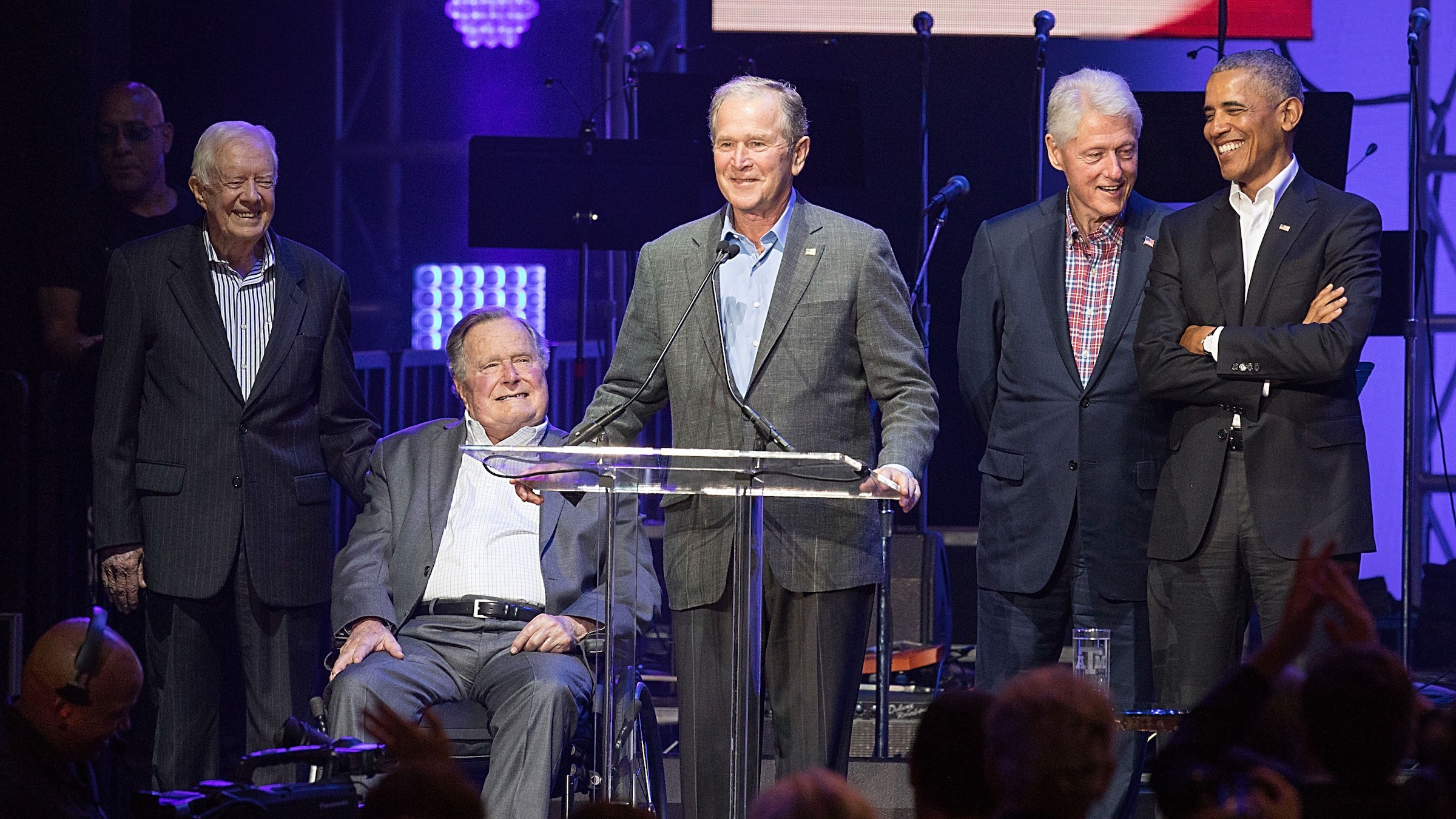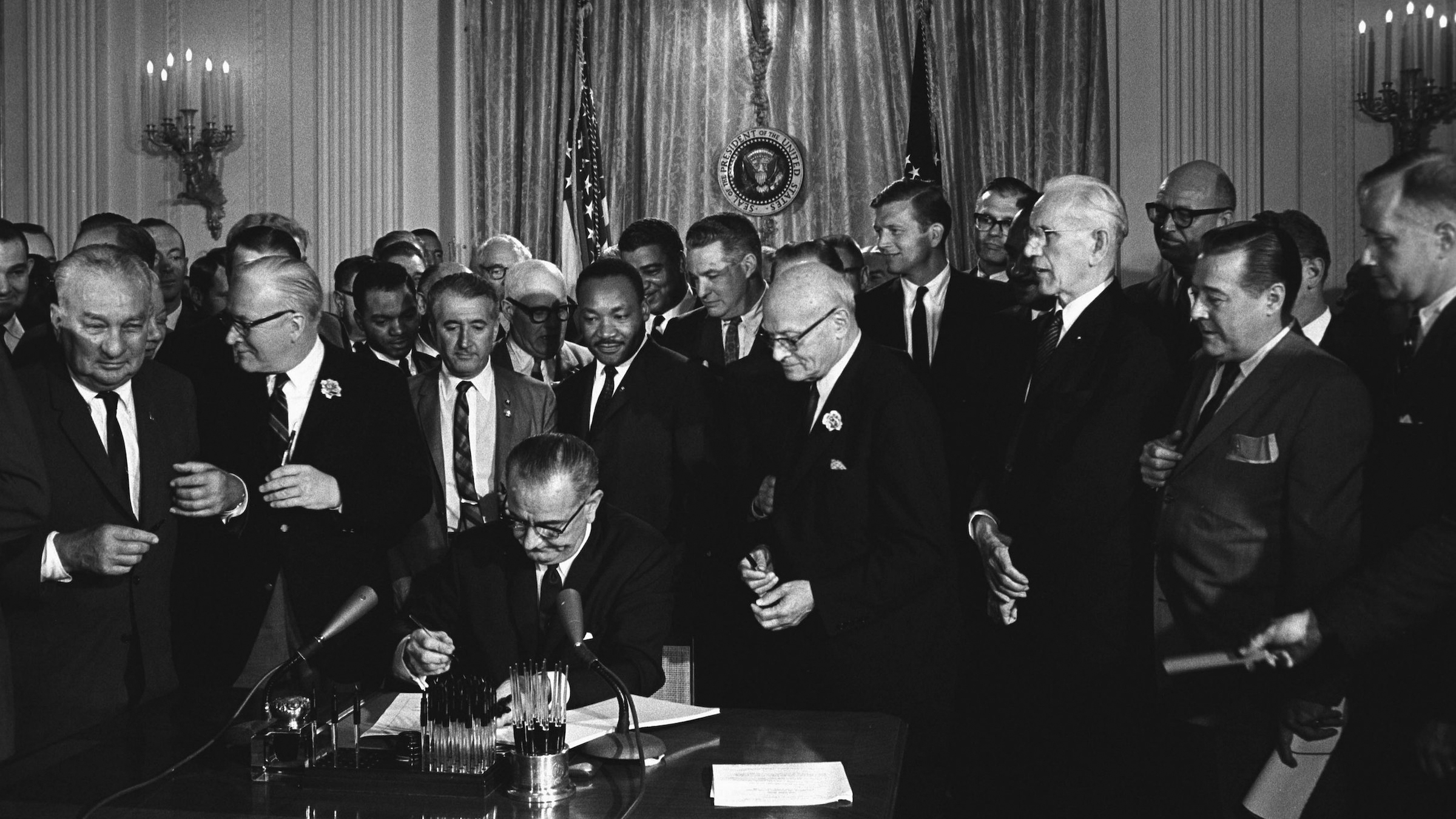
What does the president do all day?
Here's how to find detailed records.

Presidents are seemingly everywhere: campaigning for themselves and like-minded politicians, promoting their agenda among the public and Congress, and even hosting winning sports teams at the White House.
But what, exactly, does the U.S. president do all day?
Being a president isn't only about the public speeches and ceremonial meetings with foreign leaders. It's also the day-to-day running of an apparatus that Terry Sullivan, executive director of the White House Transition Project, a nonpartisan organization that helps incoming presidential administrations get settled, described as being bigger and more impactful than the role of CEO at a major global company.
Related: What was the deadliest day in US history?
One way to assess the job is to measure how many hours a day the commander in chief works. In recent decades, presidents have almost immediately started working more than they did on day one, said Sullivan, who is also an emeritus faculty member at the University of North Carolina at Chapel Hill.
In an unpublished data set Sullivan collected on the first 100 days of the presidencies of Dwight Eisenhower through George H.W. Bush, or 1953 through 1993, each president saw his day lengthen by about 10% from the first day he arrived through the 100th day.
"Even President [Jimmy] Carter's already extraordinarily long day (averaging 17.4 hours) stretched an additional 8%" from his first to 100th day in office, Sullivan told Live Science in an email.
Sign up for the Live Science daily newsletter now
Get the world’s most fascinating discoveries delivered straight to your inbox.
So, if presidents were rapidly ramping up their number of working hours, what were they spending their time on? The answer: They spent more of their time on exactly what many think a president should be doing — serving as the country's commander-in-chief, for example, and less time on political party matters.
On average, about 35% of the president's waking hours were devoted to roles unique to the office, including commander-in-chief, or the head of the armed forces, as authorized by the U.S. Constitution, and acting as the country's chief diplomat, according to the paper by Sullivan, being prepared for publication and shared with Live Science. Another 31% of the president's time involved legislative duties, such as meeting with congressional leaders and signing bills into law, and managing the White House, which means overseeing the work of his appointed chief of staff and other high-level assistants. Only about 1.4% of daily activities, on average, were given over to economic management, perhaps because that role was often delegated to experts in the field, Sullivan suggested.
About 9% of the president's time was spent on tasks related to leadership of his political party and to communications, Sullivan's analysis concluded. (The remainder of the president's day was allocated to travel and personal time.)
All the president's time
Anyone curious about how presidents have spent any given day over the past century can easily access it, as long as they have internet access. Beginning with Franklin D. Roosevelt's tenure in 1933, presidents kept what is now known as a "daily diary," and many of those diaries can be found online at various presidential libraries, said John Woolley, co-director of the The American Presidency Project at the University of California, Santa Barbara (UCSB). (The UCSB project also seeks to be a comprehensive online archive for presidential public documents.)
Related: How did the Pentagon building get its shape?
"[The diary] gives you a really granular sense of what the president did, as opposed to the schedule of main events released to the press and public," Woolley told Live Science.
The diary of modern presidents is now assembled by National Archives staff, authorized by the Presidential Records Act of 1978, from sources including the president's daily schedule, Secret Service logs and notes from White House staff, according to the White House Historical Association.
In one example, on July 2, 1964, President Lyndon B. Johnson started his day at 9 a.m. with breakfast with his wife, Lady Bird Johnson, according to that day's diary, archived by the LBJ Presidential Library. There were bill signings, meetings with legislators, ambassadors and the Cabinet. There's even an entry that says Johnson sent a handwritten note to his daughter Luci for her 17th birthday.
It wasn't until 6:45 p.m. that Johnson signed one of the most important pieces of legislation of the 20th century: the Civil Rights Act of 1964. Among many historic figures, Rev. Martin Luther King Jr. was in attendance, according to the invitee list and official photographs.

The official day didn't end until Johnson fell asleep after reading the papers on the presidential jet en route to the LBJ Ranch in Texas, at 10:46 p.m., according to the diary.
However, there are limitations to the daily diary. Sometimes, because of national security issues, the records can be vague about what occurred at a given meeting. Or, the list of people who attended a meeting might not be complete, though that's usually due to an accidental omission.
But, overall, the daily diary is a gold mine of data that we'll never have for most historical presidents. Those looking for the day-to-day activities of presidents from the country's earlier years might have to hit the history books or, if interested in original research, visit the archives themselves.
For example, George Washington kept diaries, some of which, along with correspondence and financial papers, are in the Library of Congress. Samples are available online; however, because these were handwritten, deciphering them from digitized copies may prove challenging.
All presidents, no matter what circumstances they inherit or face during their administrations, have consistent forces shaping the outline of their days, Sullivan's paper noted. Two wartime presidents, Eisenhower during the Korean War and Richard Nixon during the Vietnam War, didn't shift time spent on commander-in-chief duties substantially.
But when the Bay of Pigs crisis arose during the first 100 days of John F. Kennedy's administration, his attention to military duties more than doubled.
Originally published on Live Science.

Paula Schaap writes about science, business and religion. Her articles have appeared in Salon, Bloomberg, The Deal and Episcopal News Service. Before turning to journalism, she was a commercial litigator in New York. She has an M.A. in journalism from American University, an M.F.A. in film from Columbia University, and a J.D. from Brooklyn Law School.










